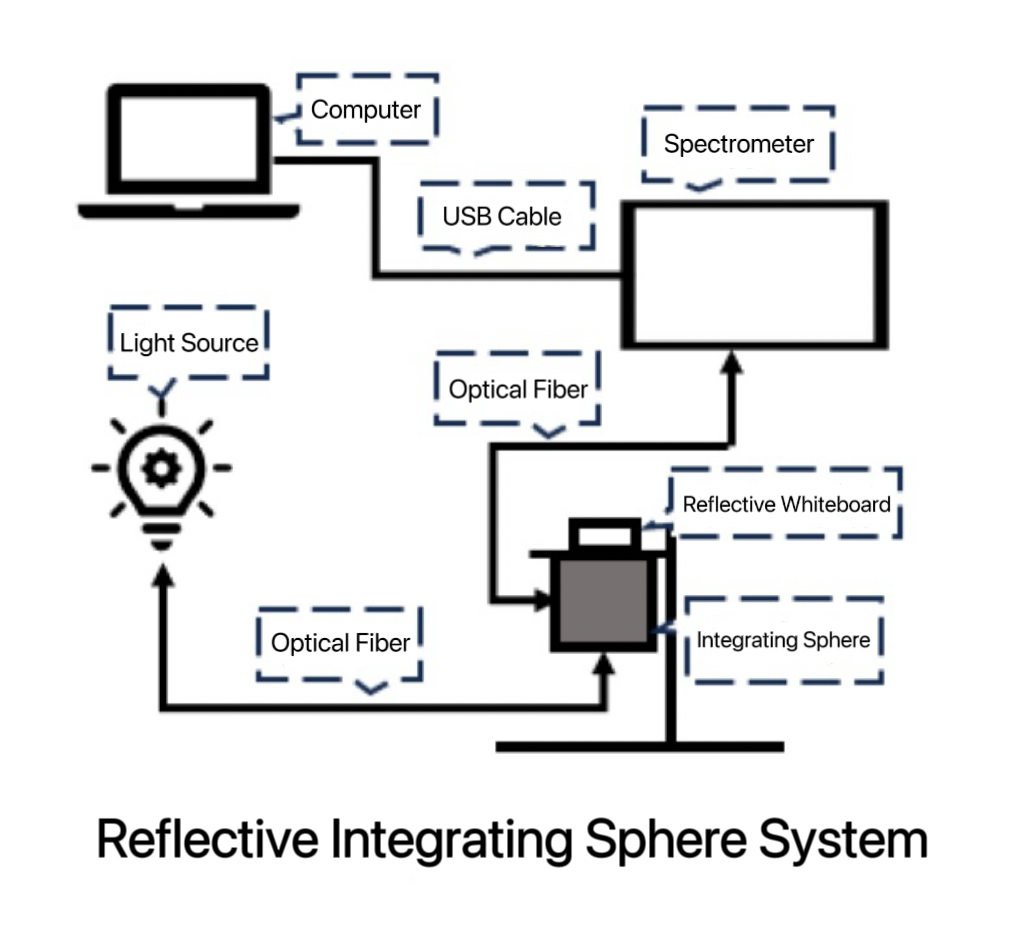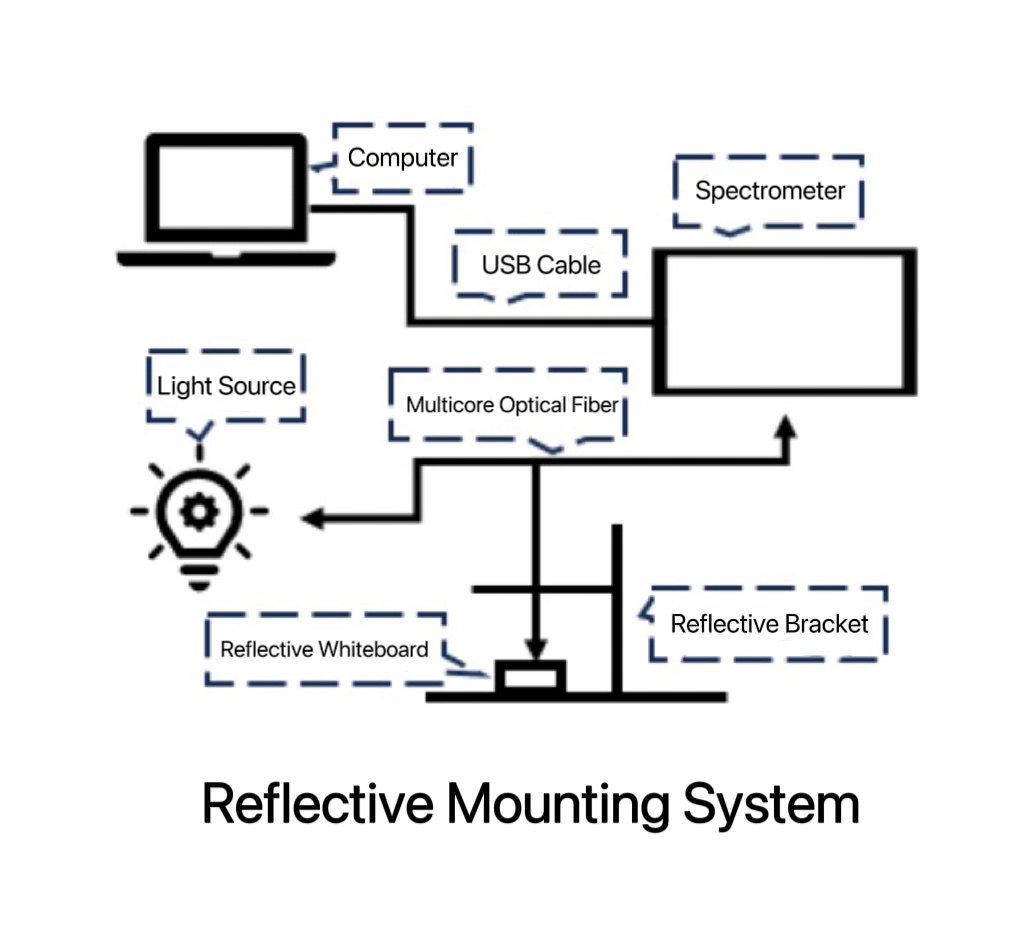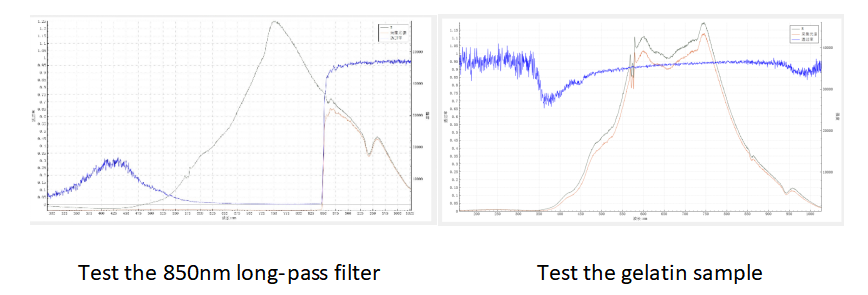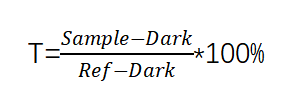1 Introduction
With the continuous advancement of science and technology, spectroscopic analysis has become an indispensable tool in modern scientific research and industrial inspection. As a high-precision and high-efficiency spectroscopic analysis instrument, the fiber optic spectrometer has garnered significant attention due to its unique technology.
2 Principle of the Fiber Optic Spectrometer Transmission Testing System
The fiber optic spectrometer transmission testing system primarily consists of a light source, optical fiber, spectrometer, and data processing system. The light source provides a stable optical signal, the optical fiber acts as the transmission medium for the optical signal, the spectrometer converts the optical signal into an electrical signal for processing and analysis, and the data processing system outputs the test results.
In transmission testing, the light signal emitted by the light source passes through the sample. Part of the light signal is absorbed by the sample, while the remaining light signal passes through the sample and is received by the spectrometer. By analyzing the intensity and distribution of the transmitted light signal, the spectrometer can obtain the transmission spectrum of the sample, thus providing information about the sample's composition, structure, and optical properties. The formula is as follows:
In the formula, T represents the transmittance, Sample is the intensity value of the transmitted signal through the sample, Ref is the intensity value of the transmitted signal through the reference sample, and Dark is the background spectral data value.
3 Advantages of the Fiber Optic Spectrometer Transmission Testing System
High Precision:
The fiber optic spectrometer utilizes advanced optical and electronic technologies to achieve high-precision measurement and analysis of optical signals, ensuring the accuracy and reliability of the test results. Jinsp Technology incorporates advanced self-developed circuit designs and uses mainstream detectors and other components.
Wide Wavelength Range:
The fiber optic spectrometer can cover multiple wavelength ranges from ultraviolet to infrared, meeting the spectral testing needs of different fields. Jinsp's SR50C covers a wavelength range of 200-1000 nm.
Fast Response:
Jinsp fiber optic spectrometers have a fast response capability, enabling real-time measurement and analysis of sample spectra, thus improving testing efficiency.
High Flexibility:
Jinsp fiber optic spectrometers can be flexibly configured according to different testing requirements, such as changing different light sources, optical fibers, and detectors to adapt to different testing environments and sample types.
Ease of Operation:
The operation interface of Jinsp fiber optic spectrometers is simple and intuitive, making it easy for users to operate, thus lowering the usage threshold.
4 Experimental Instrument Configuration and Setup
To conduct experimental validation of the fiber optic spectrometer transmission testing system, appropriate experimental instruments need to be configured. Generally, the experimental instruments mainly include a light source, optical fiber, spectrometer, sample holder, and computer.
Light Source:
Choose a stable halogen lamp or laser.
Optical Fiber:
Select low-loss, high-transmission-efficiency optical fiber bundles.
Spectrometer:
Use a Jinsp fiber optic spectrometer SR50C with high resolution and high sensitivity.
Sample Holder:
Should stably place the sample and ensure that the relative position between the light source and the sample remains unchanged.
Computer:
Used to control the operation of the spectrometer and process the data.
The setup of the transmission system experiment optical path diagram is as follows:


The suitability of the integrating sphere bracket is strong, with advantages such as flexible setup. However, it requires high operational proficiency and is highly susceptible to environmental influences. On the other hand, integrating sphere data is highly reliable, providing uniform light output and strong resistance to interference. However, it tends to be expensive, with high maintenance costs. The actual test results are as follows:

As shown above, using the transmission bracket system to set up the Jinsp SR50C for testing the transmittance of the 850nm long-pass filter, the curve is smooth and stable, and the testing effect of the cutoff wavelength is evident. Testing the gelatin sample, due to its irregular surface, the gelatin sample was tested using the transmission integrating sphere system, and the transmittance curve varied significantly from 350nm to 1000nm, effectively capturing the sample's transmission data.
5. Product Applications
The fiber optic spectrometer transmission testing system, with its advantages of high precision, wide wavelength range, fast response, and strong flexibility, has been widely applied in various fields. JINSP can customize spectrometers according to customer requirements.
Material Science:
Analyze the transmission spectrum characteristics of solids, liquids, and gases to reveal the composition and structure of materials.
Chemical Analysis:
Used for quantitative analysis of elements and compounds in samples.
Biomedical Field:
The system is used for spectral analysis of biological samples, providing crucial information for disease diagnosis and treatment.
Environmental Monitoring:
Monitor water and air quality to identify pollutants.
Food Safety:
Detect illegal additives and harmful substances in food.
Optical Device Testing:
The fiber optic spectrometer transmission testing system can test the transmission performance of optical devices such as lenses, filters, and gratings. Through spectral analysis, parameters such as transmittance and wavelength selectivity are obtained, providing a basis for device optimization and improvement.
Research and Education:
The fiber optic spectrometer transmission testing system is also an important tool in research and teaching. In experimental teaching in disciplines such as physics, chemistry, and biology, transmission spectroscopy experiments help students understand the basic principles and methods of spectroscopic analysis, cultivate experimental skills, and scientific thinking.
6. Recommended Spectrometer
JINSP's SR50C universal fiber optic spectrometer uses a cross-type C-T optical path and is a small-sized, high-performance miniature spectrometer suitable for building various common spectral measurement systems. It can achieve reflection, transmission, and absorption spectra in the range of 200-1100nm. Equipped with professional high-speed low-noise signal acquisition and processing circuits, it can obtain the best spectral signal-to-noise ratio. It uses the highest quality diffraction grating in the industry and excellent optical design to ensure high light flux and improve the detection capability of weak signals.
For more details, please visit: Best SR50C miniature spectrometer manufacturers and suppliers | JINSP (jinsptech.com)
Post time: Jun-07-2024


